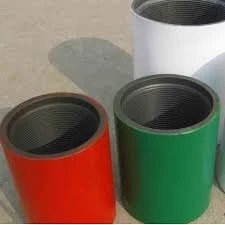- Afrikaans
- Albanian
- Amharic
- Arabic
- Armenian
- Azerbaijani
- Basque
- Belarusian
- Bengali
- Bosnian
- Bulgarian
- Catalan
- Cebuano
- Corsican
- Croatian
- Czech
- Danish
- Dutch
- English
- Esperanto
- Estonian
- Finnish
- French
- Frisian
- Galician
- Georgian
- German
- Greek
- Gujarati
- Haitian Creole
- hausa
- hawaiian
- Hebrew
- Hindi
- Miao
- Hungarian
- Icelandic
- igbo
- Indonesian
- irish
- Italian
- Japanese
- Javanese
- Kannada
- kazakh
- Khmer
- Rwandese
- Korean
- Kurdish
- Kyrgyz
- Lao
- Latin
- Latvian
- Lithuanian
- Luxembourgish
- Macedonian
- Malgashi
- Malay
- Malayalam
- Maltese
- Maori
- Marathi
- Mongolian
- Myanmar
- Nepali
- Norwegian
- Norwegian
- Occitan
- Pashto
- Persian
- Polish
- Portuguese
- Punjabi
- Romanian
- Russian
- Samoan
- Scottish Gaelic
- Serbian
- Sesotho
- Shona
- Sindhi
- Sinhala
- Slovak
- Slovenian
- Somali
- Spanish
- Sundanese
- Swahili
- Swedish
- Tagalog
- Tajik
- Tamil
- Tatar
- Telugu
- Thai
- Turkish
- Turkmen
- Ukrainian
- Urdu
- Uighur
- Uzbek
- Vietnamese
- Welsh
- Bantu
- Yiddish
- Yoruba
- Zulu
Durable Stainless Steel Hose Connectors for Reliable High-Pressure Applications
Understanding Stainless Steel Hose Couplings A Comprehensive Overview
Stainless steel hose couplings are essential components in various industrial applications, providing durability, reliability, and resistance to corrosion. These fittings are crucial for connecting hoses, allowing for the safe and efficient transport of liquids, gases, and other substances. This article delves into the significance, advantages, and applications of stainless steel hose couplings.
One of the primary reasons why stainless steel is the material of choice for hose couplings is its superior resistance to corrosion. Unlike traditional metal options that can rust or corrode when exposed to moisture or harsh chemicals, stainless steel retains its integrity even in challenging environments. This makes it an ideal choice for industries such as pharmaceuticals, food and beverage, and chemical processing, where hygiene and safety are paramount.
In addition to corrosion resistance, stainless steel hose couplings offer exceptional strength and durability
. These couplings can withstand high pressures and temperatures, making them suitable for a variety of demanding applications. The ability to endure these conditions ensures that they maintain a secure connection without the risk of leaks or failures, which is critical in process industries where any breach can lead to hazardous situations.stainless steel hose couplings

Stainless steel hose couplings come in various types, including cam lock, threaded, and crimped styles. Each type serves specific purposes, allowing for versatility in their applications. For instance, cam lock couplings are popular for quick connections and disconnections, making them ideal for temporary setups or frequent hose changes. On the other hand, threaded couplings provide a more permanent solution, ensuring a tight, leak-proof seal for long-term use.
The ease of installation is another factor that makes stainless steel hose couplings a favored choice among professionals. Many couplings can be easily assembled without the need for specialized tools, reducing installation time and labor costs. Furthermore, their lightweight nature makes handling and transportation straightforward, enhancing overall operational efficiency.
In conclusion, stainless steel hose couplings are invaluable in numerous sectors due to their corrosion resistance, strength, versatility, and ease of installation. As industries continue to prioritize safety, efficiency, and reliability in their operations, the demand for high-quality hose couplings is likely to grow. Understanding the different types and their applications will enable businesses to make informed choices, ensuring optimal performance and longevity in their fluid transfer systems. Whether in a factory, construction site, or laboratory, stainless steel hose couplings play a vital role in maintaining the standards of modern industrial practices.
-
Tubing Pup Joints: Essential Components for Oil and Gas OperationsNewsJul.10,2025
-
Pup Joints: Essential Components for Reliable Drilling OperationsNewsJul.10,2025
-
Pipe Couplings: Connecting Your World EfficientlyNewsJul.10,2025
-
Mastering Oilfield Operations with Quality Tubing and CasingNewsJul.10,2025
-
High-Quality Casing Couplings for Every NeedNewsJul.10,2025
-
Boost Your Drilling Efficiency with Premium Crossover Tools & Seating NipplesNewsJul.10,2025







